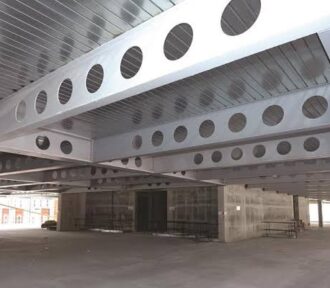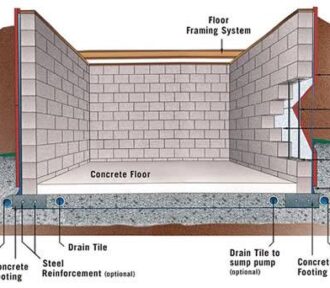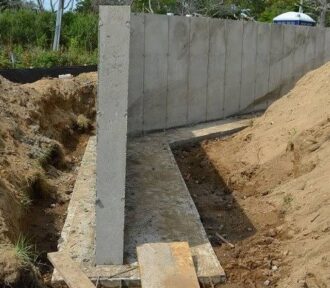The most common and conventional method of designing against shear in reinforced concrete structures is via the provision of shear-links (stirrups). However, in certain scenarios, shear cannot be resisted via the use of links alone, especially where the applied shear-force is enormous. In such scenarios, a very effective way of resisting shear in concrete is by combining shear-links with the provision of bent-up bars
Category: Structures
This article, presents a range of floor systems utilized in multi-storey steel frames, with the advantage and disadvantages of each system compared with requirement of a project. Seven floor systems are listed and afterwards described
” An implicit assumption is an assumption that underlies a logical argument, course of action, decision or judgement that is not explicitly voiced nor necessarily understood by the decision maker1. In other words, implicit assumptions are those assumptions we make without even realizing it, hence they may go undetected.
Basement walls are essentially retaining walls which in most instances, in addition to the lateral forces from soil, pore pressure and surcharge must also carry axial forces due to gravity loads from slabs.
Retaining structures or a retaining wall is any constructed wall that holds back soil a liquid or other materials where there is an abrupt change in elevation. Retaining walls have been used for thousands of years, in the construction of terraced fields on a steep slope, or a railway through a hillside, a retaining wall is used in some form or another.
Timber posts are vertical elements, when utilized in any timber frame are principally subjected to both axial compressive actions and bending moments along one or both axes. In other words, a timber post is the equivalent of a column, but in this case the term ‘post’ refers to timber or steel.
This article discusses axial shortening and its causes, how they can be predicted, evaluated and mitigated. It would explain the measures structural engineers and building contractors may employ to counter its effect. It would also make references to the current codes of practices were necessary.
Whilst construction methodology tends not to be an issue in many buildings, the same cannot be said for bridges. Nearly all bridges cannot and should not be designed without good knowledge of its temporary stages and construction methodology4. In most cases it is the construction method that determines the design. In selecting the best scheme, a bridge designer would aim to select a construction method and a bridge layout as they are basically entwined.
Selecting the most appropriate foundation type is often a very difficult undertaking in design and construction. Even, perhaps the most important part of the design process. Rightly so, it can be argued that the foundation of any structure is the most principal component of that structure
While many engineers make the very valid argument that software prevent errors and human fallibility, many other engineers including this writer make the equally valid argument that these tools contribute to creating errors. Are these software’s actually aiding us to become better engineers or are they actually replacing us, at least, in cognitive sense, as engineers?

![[UPDATED] Design for Shear Using Bent-up Bars](https://structurescentre.com/wp-content/uploads/2020/12/20201206_182543.jpg)







![[UPDATE] Foundation Types: Selecting a Foundation](https://structurescentre.com/wp-content/uploads/2021/06/121-330x288.jpg)
